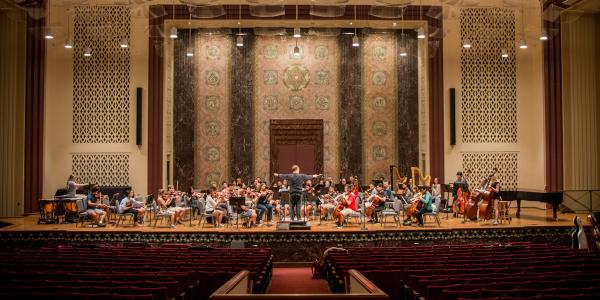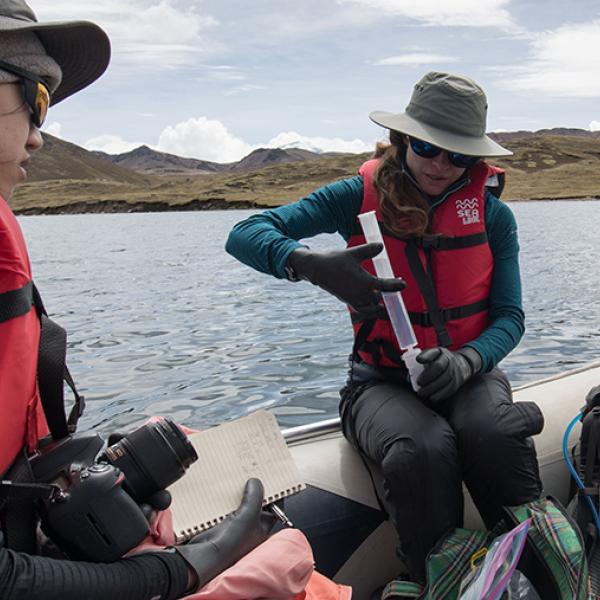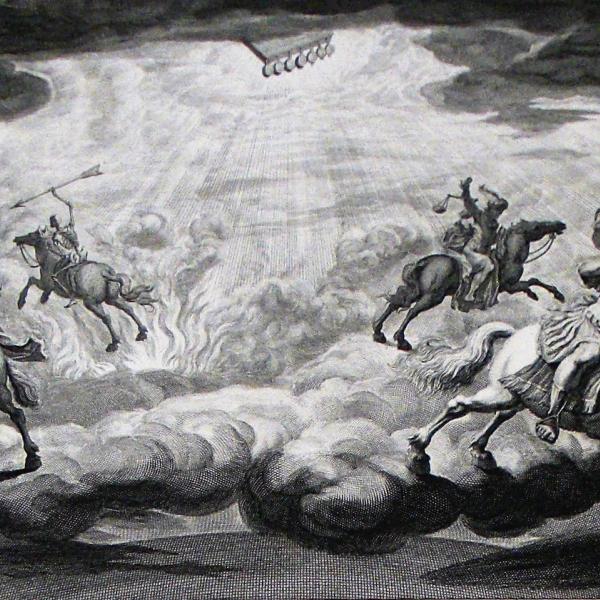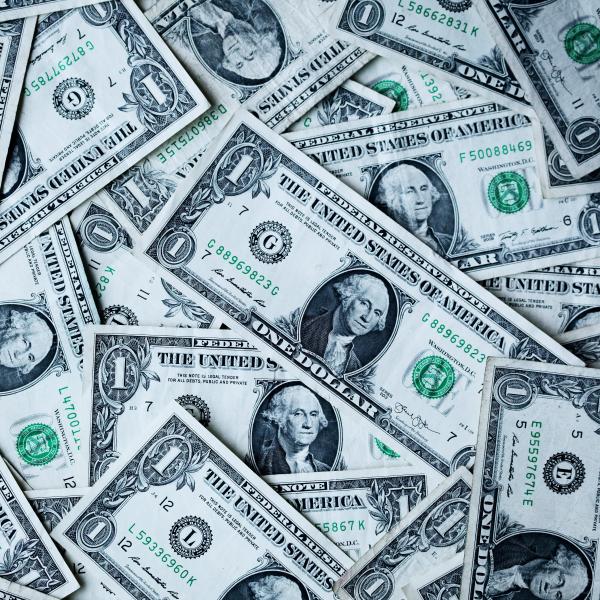It’s been 200 years since Mary Shelley wrote Frankenstein, the classic tale of creation gone wrong. In honor of the novel’s anniversary – and just in time for Halloween – three undergraduates at Washington University in St. Louis were each invited to bring his own brainchild into being: a piece of music, inspired by Frankenstein, to be performed by WashU’s symphony orchestra. In this episode of Arts & Sciences' Hold That Thought podcast, Cole Reyes, Andrew Savino, and Ethan Evans talk about their music, the creative process, and Frankenstein.
Symphony Orchestra: Frankenstein takes place at 7 p.m. on Sunday, Oct. 29, at the 560 Music Center.
Transcript:
Cole Reyes, on his composition "The Creator"
I'm Cole Reyes. I'm a sophomore in ArtSci majoring in music composition and math.
These two pieces are actually a bit of an orchestral set. The first one is entitled "The Creator," and the second one is entitled, "The Monster." I'd never written something quite like this, and it proved to be quite a challenge because when I was presented with this idea I had no idea where to start. I was like, 'All right, I've read Frankenstein. What do I what do I do from here?' And so the first thing that I thought of, I'm like, 'Right. There are all these composers that write for film, that this is all that they do.' So studying those, and seeing how these composers will use elements of the film that can be so small, and use them as main motifs throughout the entirety of the film score.
My vision for the creator was - a lot of film score soundtracks have pretty basic musical ideas that are expanded through the course of, you know, four minutes or however long it is - this idea that music doesn't necessarily have to be overly complex in order to have emotion attached to it. So overall, between the two movements this is the one that's more easy to follow. It sounds like a character's theme from a movie - just kind of background music to what I envisioned the actual Dr. Frankenstein to be like. While he was creating the monster, this is the soundtrack that came into my mind when hearing that or seeing come into play.
Andrew Savino, on his composition "North"
Actually, I really do like the idea of having something concrete to base something off of. I like being given inspiration, also limitations - limitations in the orchestration, limitations in the subject matter. Because it gives you a place that you can start, and it can go really anywhere from there.
So the idea was the journey north that the monster took. I guess the idea was reflecting upon the sequence of events, so it's kind of a jumbled mess of emotions in that sense. The piece is centered around attempting to sound pretty, but ending up always resolving to something dissonant and unexpected and weird, and continually going in that cycle until it kind of climaxes towards the end.
The way you make chaos is that you intentionally break rules - and break some rules while retaining others, so it still sounds like something. So what I was trying to do, especially at the beginning of the piece, was to have it be completely atonal, but to focus on starting in one place and still follow voice leading patterns, so the lines move in in ways that are jarring, but end up in a different key and a different chord that doesn't sound right. To sort of create that sound of chaos, and not resolving in a way and that you want it to, so it's more dissonant and dark.
Ethan Evans, on his composition "Dialogue"
My name is Ethan Evans and I'm a junior. Back in high school I didn't really think of myself as a composer. I was classically trained in piano since I was like five, and so I did a lot of repertoire and that sort of stuff. I got really into listening to music, and then trying to from listening to it figuring on the piano. And then from there I just started messing around, doing my own thing. It wasn't really until coming here, at university, that I sort of realized that this could be called composition. Playing around with music and creating your own thing is technically called music composition. So I think that gave me sort of a feeling of legitimacy.
Our prompt for what we are supposed to write was essentially just, 'inspired by Frankenstein.' It was actually a pretty broad kind of prompt. And so for me, I took that as - I wanted to gain some inspiration from the plot, but I also thought a little bit about how Frankenstein has become a classic movie, as well. Thinking about the movie score and getting inspiration from Frankenstein, that score, and also then later on, Young Frankenstein's score, then the modern Frankenstein movie, as well.
It's called "Dialogue." And it is called that because basically the structure of the piece is a back and forth between the piano and the orchestra. And it's a back and forth between a theme that's introduced at the beginning that's just sort of dark, kind of mysterious theme that then sort of builds to this ruckus kind of something, which then cuts off and then goes into a lighter theme. So it's a dialogue between those two kind of moods. And ultimately, it's like thinking about, in terms of Frankenstein the movie, dialogue between classic movie scores and then the classical music world. And so how, essentially in classic movies, their scores were almost like romantic era style music. Very evolved harmonies, and that sort of thing. But as that's progressed, it's interesting because it's almost as if the classical music world has started to adopt some of the styles of movie scoring. And then on the other side of things, movie scoring has started to adopt some of the styles of classical music. And so merging those two worlds - that's always been something that's fascinated me. And so I tried to sort of get at that in dialogue.
Cole Reyes, on his composition "The Monster"
To me, there are two things that are most on display during the piece of "The Monster." And that is one, this idea of amalgamation - of all of these parts thrown together to create a bigger whole. So in my mind we had, you know, just these parts that Dr. Frankenstein created that are welded together, where it's not the most seamless transition, like it's an actual person. Or there are these very dissonant chords that are very unpleasant to the ear, but add to this creepy amalgamated effect.
In addition, I tried to think of monsters physicality. In that he's kind of big - like a presence that would make you uncomfortable. And so this plays out in kind of two ways. In the very first theme there is this awkward, hobbly rhythm that goes like - duh, duh, duh duh DUH. So that's kind of this harkening back to what I would assume - if the monster were to be walking around, that is what it sounds like in my mind. And so that keeps coming back throughout the entire piece. As well, the orchestra's texture or it's timbre gets super, super thick in the middle of the piece, which is kind of this idea that this being could be super tall, and if you were going to come into contact with it you would be dwarfed by it. And so that was the other thing that came into mind while writing it. And therefore, all of these amalgamations just coming together. That's how I created it.
Credits:
The Washington University symphony orchestra in rehearsal, conducted by Horst Buchholz. Thank you to Jamie Perkins for recording assistance.





